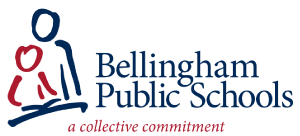What Do You Mean by “Ends,” “Means” and “Executive Limitations”?
Ends: The ends are the results the school board expects, including how much they expect those results to cost. The school board creates policies that define the ends. In this way, the board provides strategic leadership by clearly defining what is to be accomplished, for whom and with what worth, cost or priority.
Means: The board also sets board means. These are the policies that describe the board’s job and how it directs the superintendent to achieve the ends. These also are referred to as the governance process.
Executive Limitations: The superintendent doesn’t have complete freedom in making decisions about how to accomplish the ends. Executive limitations are policies that define what methods cannot be used to get the expected results. In essence, the school board is pre-approving all means that have not been expressly prohibited. This gives the superintendent the power to make decisions that create the desired ends.
Is this a way to get out of much of the responsibility for running the district?
No. Under policy governance, the board has as much control as needed over the results. The board decides what the results should be and how much they should cost, and what specific methods are not acceptable. The board then delegates authority to the professional—the superintendent—to make the decisions about how to achieve the results.
The superintendent determines the means for accomplishing the ends. They are responsible for figuring out the how in reaching the expected results. Since no one could run the district alone, the means most likely include hiring staff to determine the decisions and circumstances that produce the ends.
What is the benefit to the students and families?
By using policy governance, there are clearly defined ends that are expected to be achieved. That leaves the means of achieving those ends up to the superintendent and all staff who work under their direction. People with extensive professional preparation and experience make the decisions that affect student education.
What is the benefit to BPS employees?
Policies will clearly define the ends expected, allowing everyone to understand them. Policy governance allows performance evaluations to be tied to the ends set by school district policies.
What do you mean by owners?
The Bellingham school board exists so that young people residing in the area served by Bellingham Public Schools will have skills and knowledge. It does so on behalf of the public. Under policy governance, this makes the public the owners of the school district.
The board is accountable to the public as a whole and on their behalf decides the benefits to be produced by schools, who the beneficiaries are, and what the benefits are worth.
The public includes parents, students, and employees when they are considering the purpose of schools from the broad perspective of the common good rather than from their personal perspectives.
Shouldn’t the “owners” be families and students with a more direct connection to the school district?
Families and students are not owners. In their specific roles, they are the beneficiaries of the school district; they benefit from what the school district provides. Their only ownership role comes from being a part of the public as a whole.
The board holds Bellingham Public Schools in trust for the owners. Those owners (the public) have the moral authority to determine the purpose of the organization. In this case, that purpose is to educate children attending the schools in the district.
Isn’t the government truly the owner?
While government may be the major—or even the only—source of funds, it is not the “owner” but a “bulk purchaser” on behalf of the public in general. In return for providing resources from public funds, the government maintains the right to require certain results or place certain restrictions on the school Board, but is not directly the “owner.”
